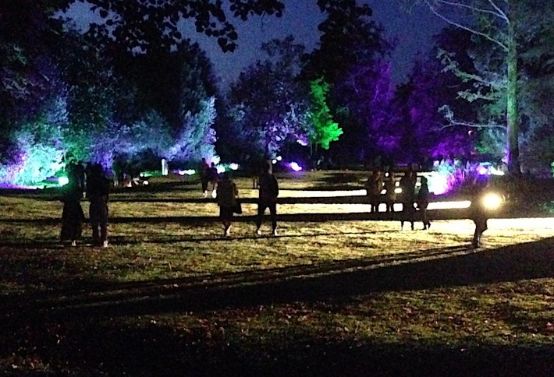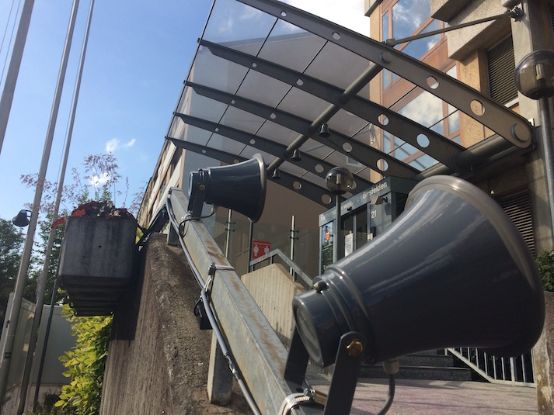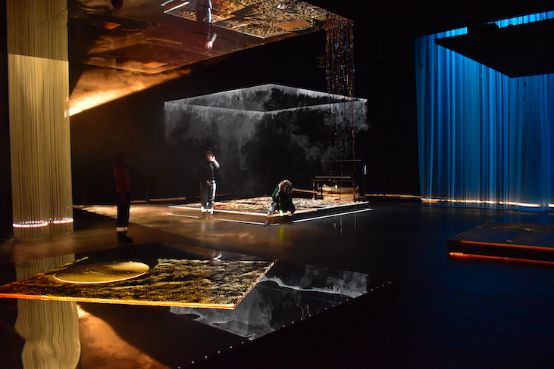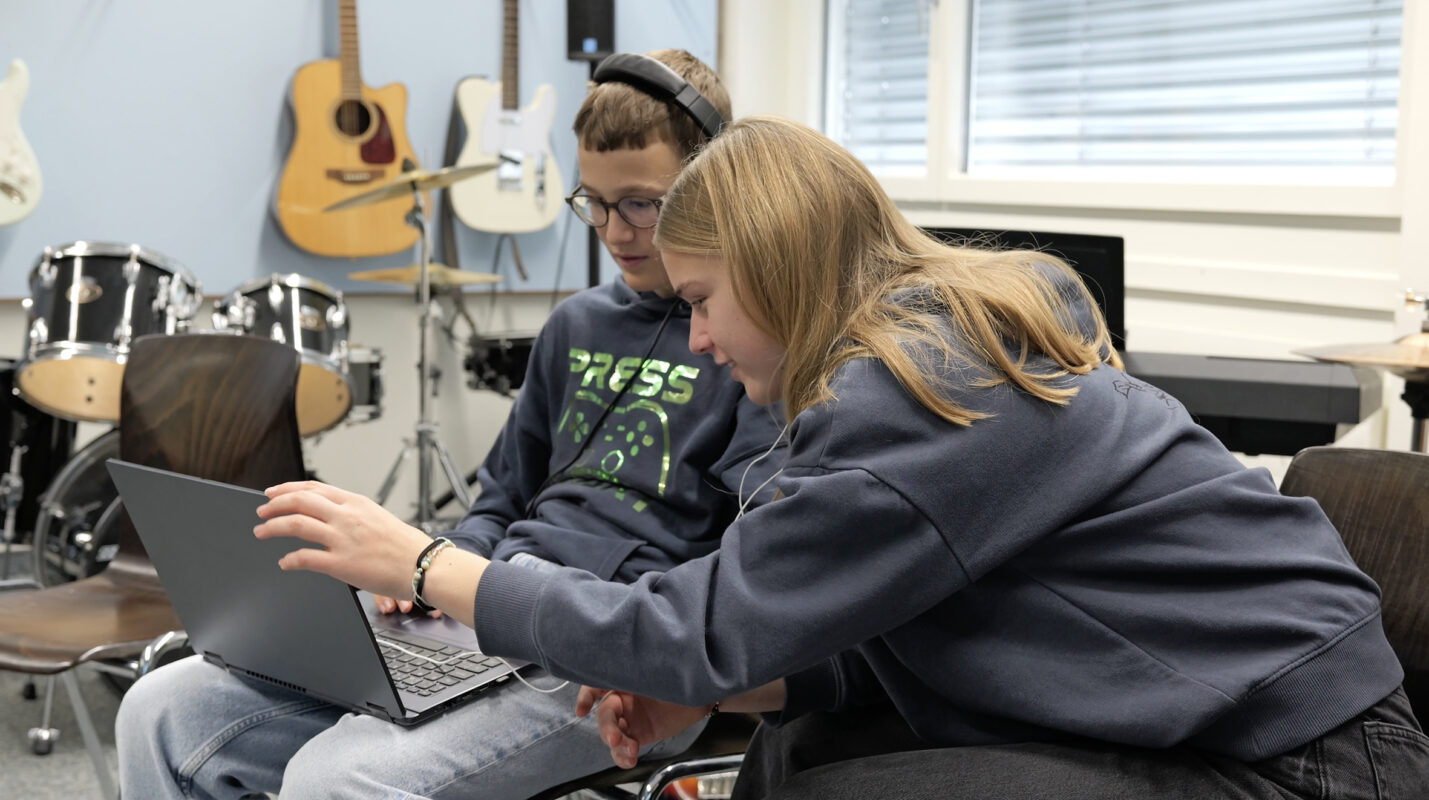Basel periods: Three aural aisles
The "Zeiträume" biennial for new music and architecture will take place in Basel from September 9 to 19. This year's motto is "The Transformation".

The transformation of space almost jumps out at us, especially in the city: a crane looms up there, a construction pit gapes there. Music, on the other hand, is fleeting - and therefore actually change in itself. But it remains intangible. A great deal of philosophizing and research can be done on the complex relationships between spaces and acoustic impressions. The first part of the Zeiträume Basel festival magazine is pages of evidence of this. You don't have to read it, but I do wonder whether this superstructure can obstruct direct access to what is on offer. On the other hand, I would be delighted if real access to the locations of the events were clearer and beckoned from afar (from the nearest public transport stop, for example).
On Sunday, September 12, I set out to explore some of the offerings. Some in which space and sound come together in an unusual way.
A community map made of sounds
The sound of Birsfelden is a project that asks what is acoustically typical in view of the changing space. In this municipality, which belongs to Basel-Landschaft but borders directly on the Basel urban area, construction is planned. The village center as it looks now is certainly captured in many a photo. Hanan Isabella Kohlenberger interviewed the residents so that she would also have an aural memory. They talk about the pitch of the water in the Birs, the noise of the cars and the mix of languages that can be heard here. The composer Cathy van Eck has used this to create an audio portrait, a sounding postcard so to speak, one of those cards that combine very different views of a place. And it's not just idyllic scenes that appear here.
-

Whispering bags tell of the typical sounds of Birsfelden. Photo: Pia Schwab
Loudspeakers have been installed in front of the municipal administration building, which has already moved. When you step onto the designated fields, you hear excerpts from the collected stories, as well as sounds. On this Sunday afternoon, they create a wistful atmosphere in front of the deserted building. Where are they, these people who are so committed to describing the sound of their homeland to us? I only see whispering bags. I then meet people a little further on, sitting outside in a pub, who again don't seem to be interested in the purple dots that indicate where something can be elicited from the loudspeakers.
A cinema of the imagination
In the barracks I enter No man's land. "There are no seats, no stage and no performers," says the program. Instead, there are pedestals with matt or shiny surfaces, hanging curtains and reflective ceiling elements in the darkened room. The little light turns it into an imperceptibly changing space and allows me to experience the noise and sound theater I am now immersed in more intensely. At one point, a train runs, gets louder and rolls over me. The noise makes the ground tremble. Later, rain falls. Then doors slam shut, a family sits down to eat at the table, the sound of crumbling from afar. Azzurro ... After about a quarter of an hour, I suddenly realize: now I'm in. At the beginning I was still watching the other listeners closely, now they become unimportant. Sometimes someone walks past the platform I'm lying on; sometimes I walk across the room. This also changes what I hear. No one here will have heard the same thing at the end, not to mention the different movies in my head. The acoustic impressions open up individual inner spaces. The No man's land is filled with my own images.
-

Spaces emerge and disappear again in the stream of sounds. Photo:© Dimitri de Perrot
Dimitri de Perrot also calls his project "Disco of everyday life". He came up with the idea, composition and stage design for this - as has just been announced - for the Design Award Switzerland immersive music theater proposed in 2021. It will also be performed in other cities in the coming months (see below).
A garden for the ears
An hour and a half later, I enter Sarasinpark in Riehen. The local music school is celebrating its 40th anniversary there in collaboration with the music schools of the Basel Music Academy and the Bäumlihof grammar school and in cooperation with the Zeiträume festival. By now it has become dark. Purple and green lamps shine up from the shrubs and bushes into the trees, white spotlights draw paths of light on the lawn, but leave the strolling people in the dark. Thanks to Michael Omlin's lighting design, you walk through a magical world. Then the children and young people begin to make music. 28 groups are spread across the unreal landscape. And they also play "distributed", sometimes a mandolin group sounds here, then a wind sound blows past from far away, some young people move through the audience and murmur mysterious messages. Sometimes the soundscape thickens, then thins out again. And as dabbed as the whole thing seems: The groups, which are often far apart, play together. This succeeds thanks to an arrangement in time that is precise to the second, which everyone follows via cell phone.
In his introduction, composer Hansjürgen Wäldele spoke of a "garden for the ears", of 28 beds that would be cultivated by the young musicians, of the seed that sometimes steals from one bed into another. With 28 miniatures and 250 variations, this is exactly what he has created: A biotope of sound plants, some of which are very similar, but are nevertheless individual, also individually adapted to the level of the pupils. What is not obvious is the title of the whole: Snurglond. But that doesn't matter. Perhaps it's called "Klanggarten" in an as yet undiscovered language? This fits in with what Wäldele said at the beginning and what can be said for the whole festival in view of the dense program: "Don't worry, you're sure to miss most of it!"








